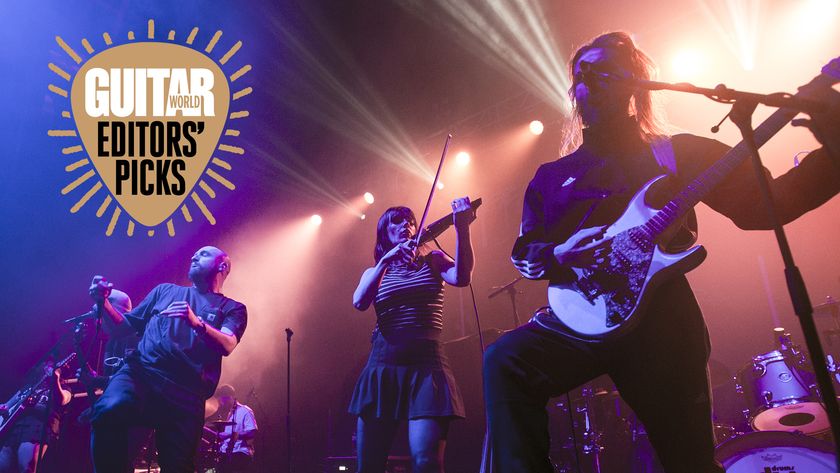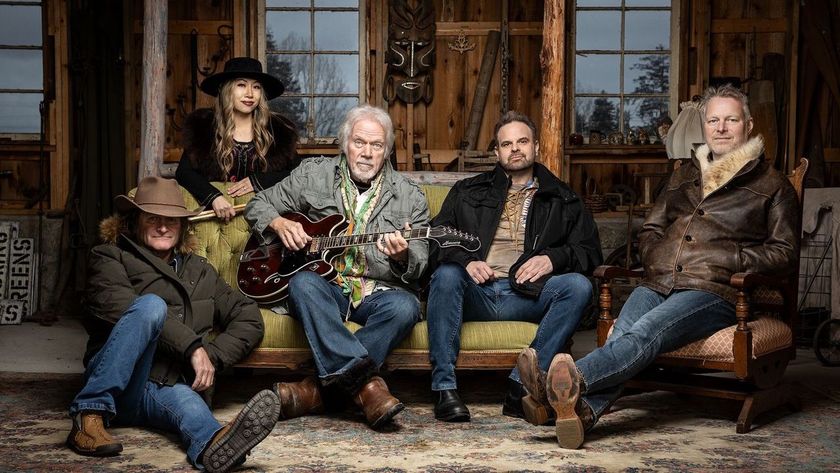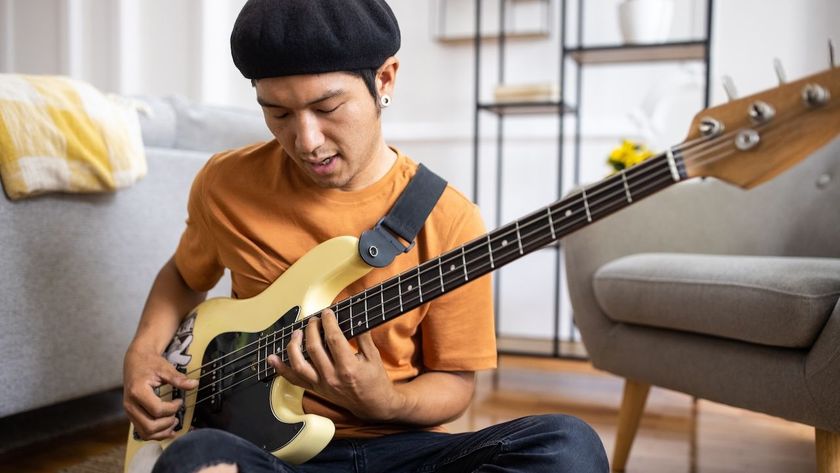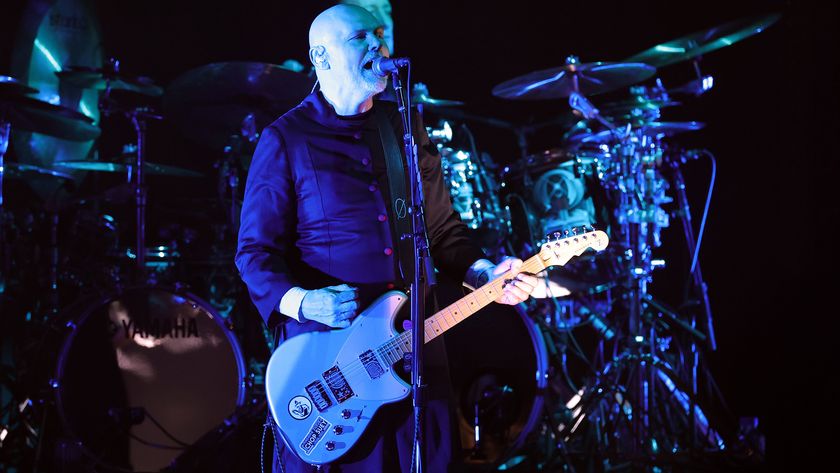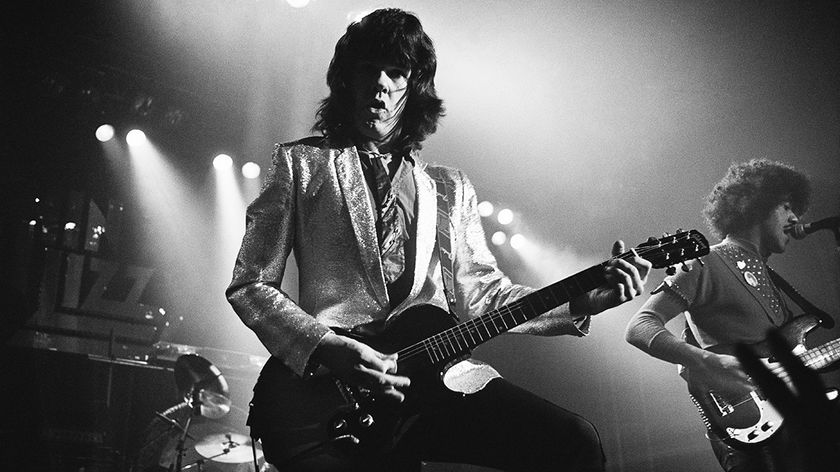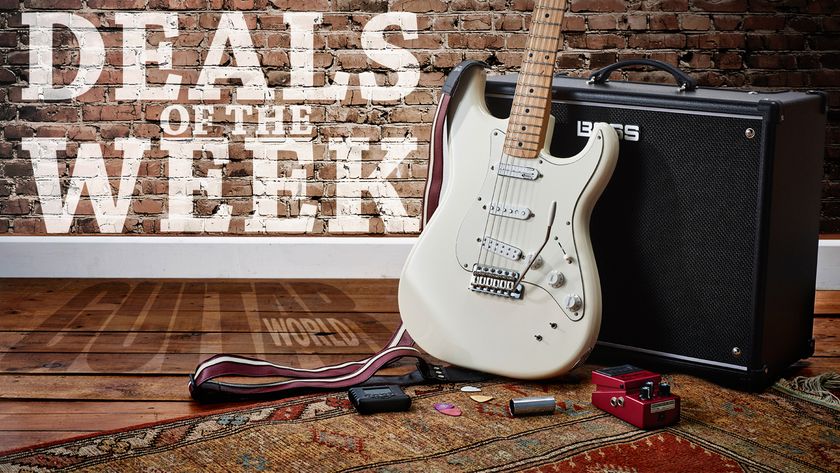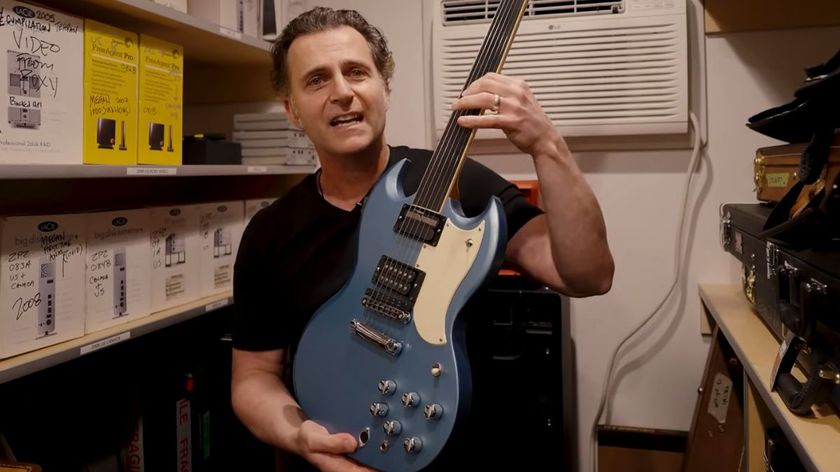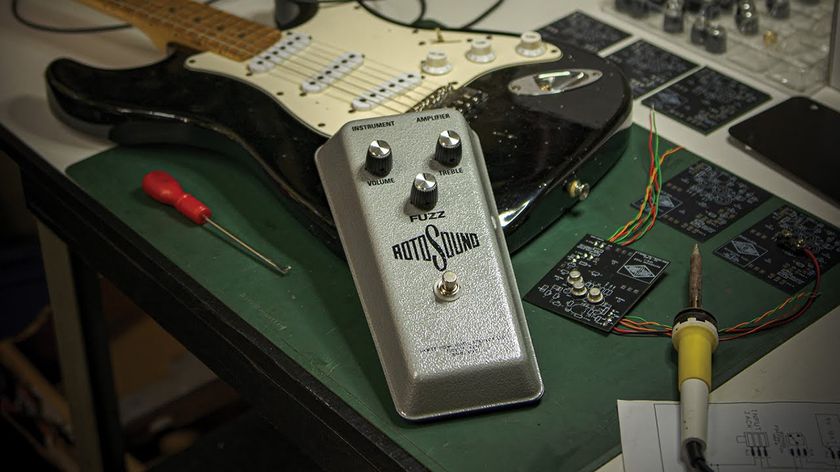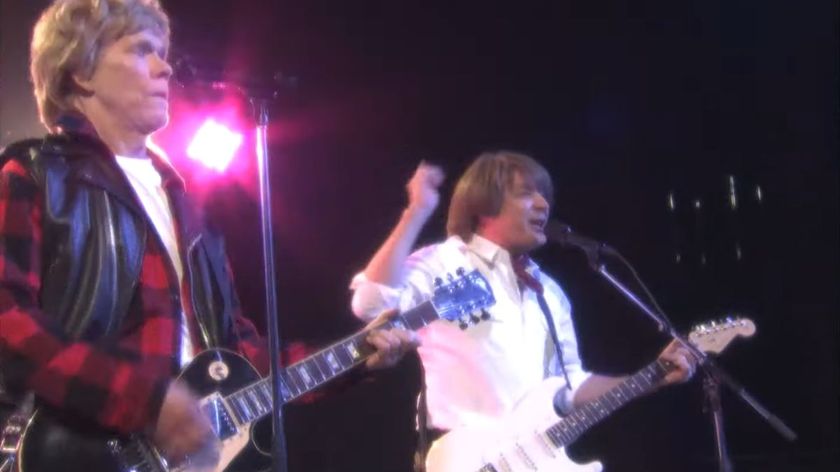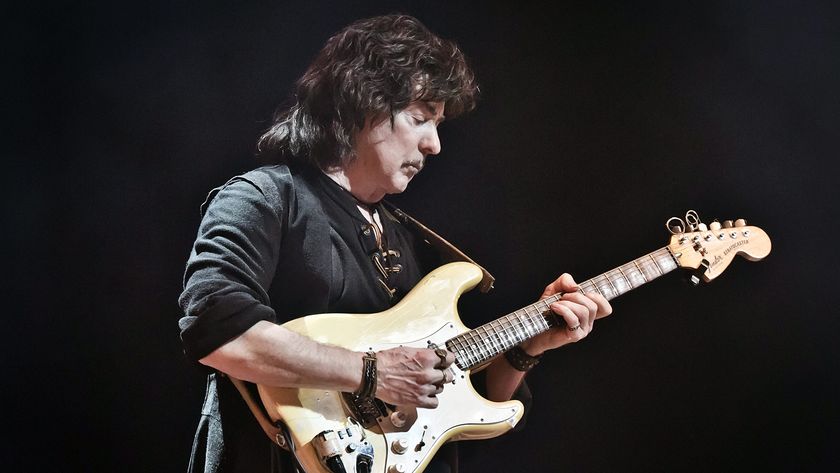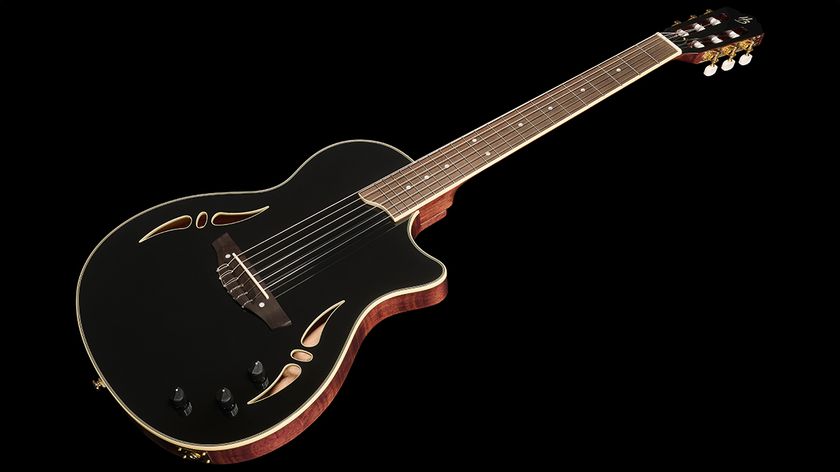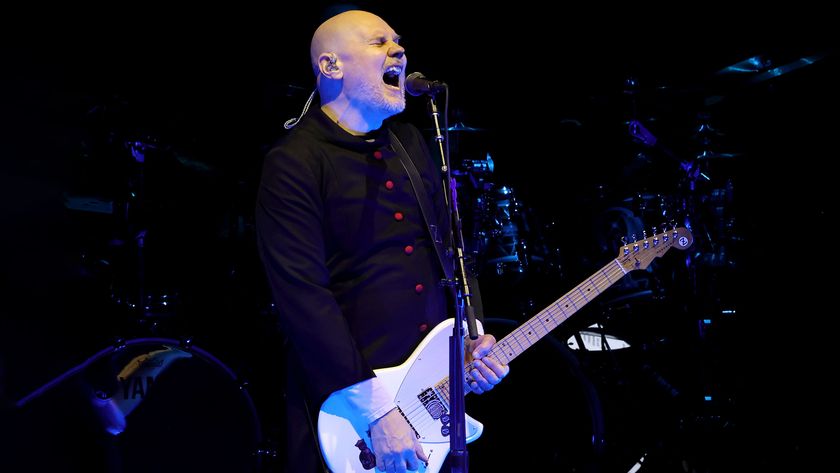Killer Guitar Tracks: Double-Tracking and Finding Your Own Tone, Part 2
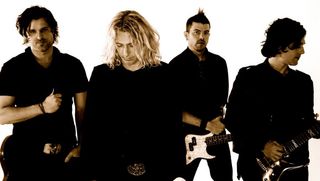
With Collective Soul, I have to take a different approach when it comes to doubling since there are three guitar players in the band.
What we usually do is to have each guy play his part using a completely different guitar/amp setup for each track. When it comes to solos or any melody bits, I’ll typically double them using my homemade amp so we have some options at mix-down.
When I’m recording my own material, my strategy changes a bit. I really want the songs to represent me as the only guitar player, so my guitar sound needs to help reflect that concept. I’ll double a lot of parts, but I fight the urge to use a different amp and guitar on every single track; instead, I’ll use a handful of my go-to pieces of gear that I like and call it a day.
So if I’m recording what I’ll refer to as a standard-issue rock song with a riff, big chorus guitars, solo etc., this is my usual approach:
For the main riff I’ll use one of my favorite MJ guitars through my homemade amp, and I usually carry this all the way to the end of the song. I’ll then double this with another one of my favorite guitars that has something a little different about it. Sometimes it’s just pickups or scale length. Sometimes I’ll use my homemade amp again or I’ll use my Splawn Quickrod, which is very much in the hot-rodded Marshall camp.
My goal is to make these two tracks as big and fat as possible, and hopefully these parts set up the bed for any melody guitars or solo stuff I’ll want to add. Usually I’ll pan these tracks hard left and right. The tones are different, but not drastically; like I said, I don’t want it to sound like two different guys playing. I guess what I’m going for is more of a stereo sound.
The question that always comes up during the doubling process is just how tight do we make these tracks? It’s weird: When you work in Pro Tools, you automatically find yourself zoning in visually as much as you do with your ears when you listen back to your performance. When you see a little flam between the waveforms, it’s almost like you notice it even more when you listen back. This takes it to where I find myself fighting the urge to make it perfect.
Get The Pick Newsletter
All the latest guitar news, interviews, lessons, reviews, deals and more, direct to your inbox!
The fact is, if you fix every track and line up everything perfectly, you run the risk of things actually sounding smaller. Well maybe not smaller, but more “mono” sounding, and that sort of defeats the purpose of doubling, doesn’t it? I guess it boils down to what we already know and that is we should be using our ears and not our eyes when we record.
So when the chorus of the big rock song hits, I usually like to bring in another part. Sometimes it’s a melody or a part with an effect on it, but then other times I just want the chorus to be bigger but without any added melodies. This is where I’ll bring in what I call “helper guitars." Basically my goal is to keep the tone of everything the same, but I want to give the song a kick in the butt.
What I usually do is something like this:
I’ll use a guitar like my Soloway Swan that has a 27-inch scale length and run it through my homemade amp, sometimes with just a tiny smidgeon of chorus on it. I’ll then double that, playing the same chords but on my other Soloway (a seven-string model). There’s just a different timbre you get with longer-scale instruments, and they hold together well with big chords, especially the drop-tuned stuff.
In the mix I’ll just sneak these tracks in, and that slight chorus effect helps make these tracks sit in yet give them some identity. Sometimes I’ll use different inversions of the chords too, and if the song allows me to take advantage of the lower inversions that the seven string does, even better! These parts usually end up anywhere from hard left/right to let’s say about ten and two o’clock on the pan knob.
When it comes to the solos and melody parts, a lot of times I’ll throw some sort of effect on the double just to make things more interesting.
It can be a balancing act between maintaining your original tone and having fun with all the parts and sounds, but it’s worth remembering that tone does really start with the fingers and if it sounds right to you, then it is right!
Joel Kosche is the lead guitarist for the chart-topping band Collective Soul. Prior to joining the group in 2001, he was a fixture in the Atlanta music scene, playing in local bands and working part time as a guitar tech for various artists, including Steve Winwood. When he’s not on tour or in the studio, Joel, a self-professed "gearhead" and “tinkerer,” enjoys building and modifying guitars and tube-based amps. Outside of his duties with Collective Soul, he has appeared on numerous recordings, including the epic Shadowman from Kansas lead singer Steve Walsh. Most recently, Joel released his first solo record, Fight Years, a self-produced effort recorded mainly in his home studio (Flame Under Heel Studios) and released in June 2010.
